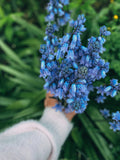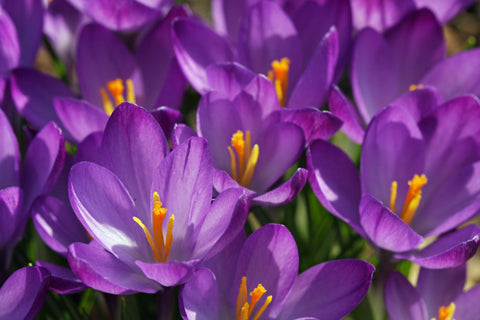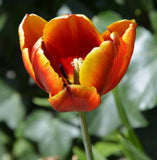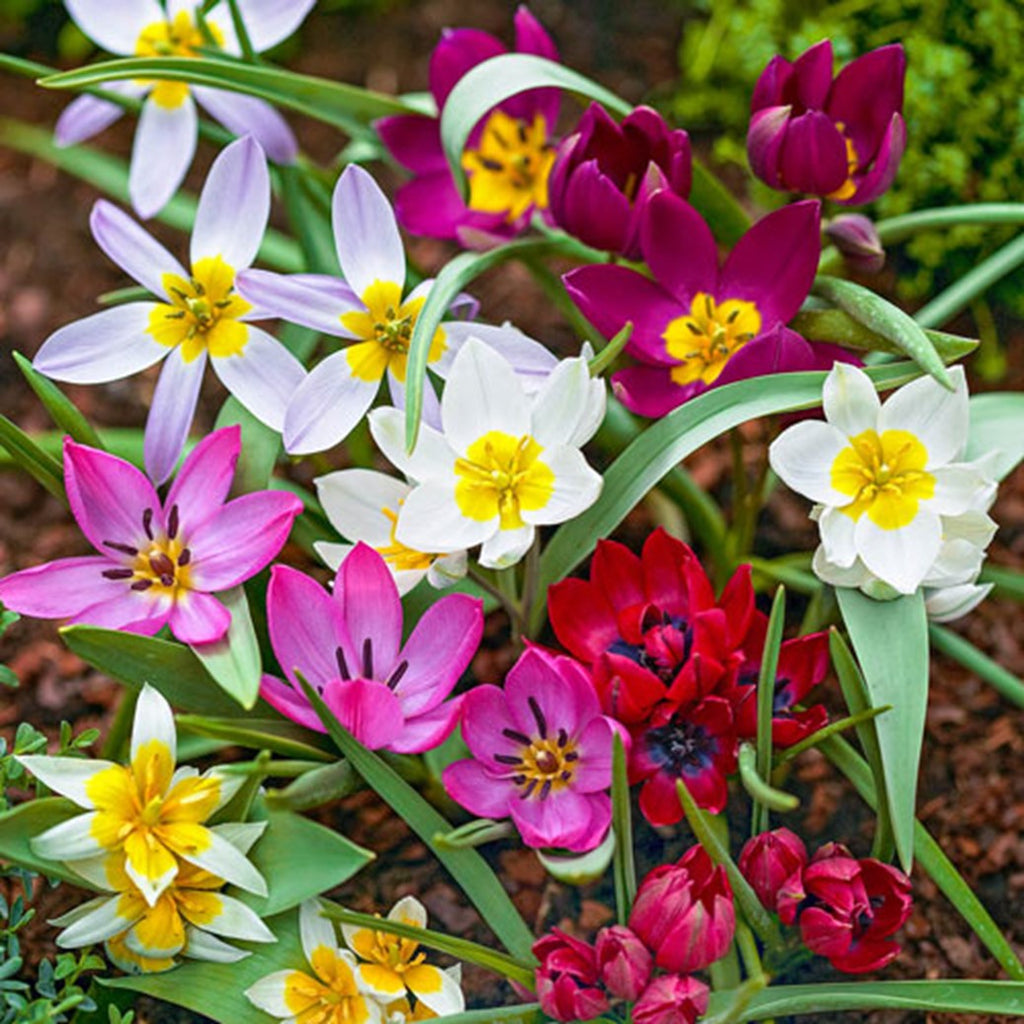Gardener’s rarely think of the benefits of planting bulbs for native bees and honeybees, but they should. Bulbs provide the earliest pollen and nectar. Bees begin to forage if the temperature reaches 55°F and as winter weather warms you will find bees foraging all winter. Early flowering bulbs come as true bulbs, corms, rhizomes, or tubers.
Bulbs that provide for the bees are not the more ornamental double and triples that we prefer but the more old- fashioned bulbs that have developed along with the bees of your area. Hybridization of bulbs changes the structure and can limit access to the pollen and nectar. Each bee requires a specific type of flower on which to feed.

The earliest bulbs that provide for our pollinators are Scilla or Siberian Squill a small blue flowering bulb that prefers well drained in full to part sun. This bulb is from Europe where beekeepers plant them in mass around their hives.
Snowdrops or Galanthus, are hardy zones 3-9 and bloom in February with a white hanging bell shaped flower with green on the edge.

Native bumble bees and other larger bees can push into the flower and retrieve nectar and pollen. Plant in full to part shade three inches apart and three inches deep. Moist soil during the growing season will allow them to colonize.
Crocuses the harbinger of spring prefer sun to part shade. They come in a variety of colors blue, yellow, white, orange, and purple. They are hardy in

zones 3-9. Plant in part shade to full sun in large groups for best effect.
Winter aconite or Eranthis grows natively in woodlands of Europe and in harsh years blooms under the snow. Bees love this bright yellow flower in the Buttercup family. Hardy zones 3-9. Looks great in large numbers and will re-seed.
Chionodoxa forbesii or Glory of the Snow blooms in a raceme of 6-10 violet blue star shaped flowers. Hardy zone 2-9 and grows in full sun to part shade. Native to western Turkey this plant provides both nectar and pollen to pollinators. Tolerates deer gazing and growing under a black walnut.

Tulipa sp., which includes all species tulips are hardy zones 3-7. They tolerate poor soils, dryer soils, and are dependable to emerge each year. They like full sun and come in oranges, yellows, pinks, and reds. They are smaller than our florist type tulips. They are native to the mountain areas of the mid-east. Varieties include Tulipa sylvestris, bakeri, batalini, hageri, and praestans or collectively called species tulips. They are more deer resistant than the florist types.
Other bulbs that provide for our early pollinators include Hyacinth, Allium, Fritillaria, Gladiolus, Muscari, Asiatic Lily, Single Daffodils, Dahlia, Crocosmia and others.
September through November is the best time to plant spring flowering bulbs in the mid-Atlantic region.

























